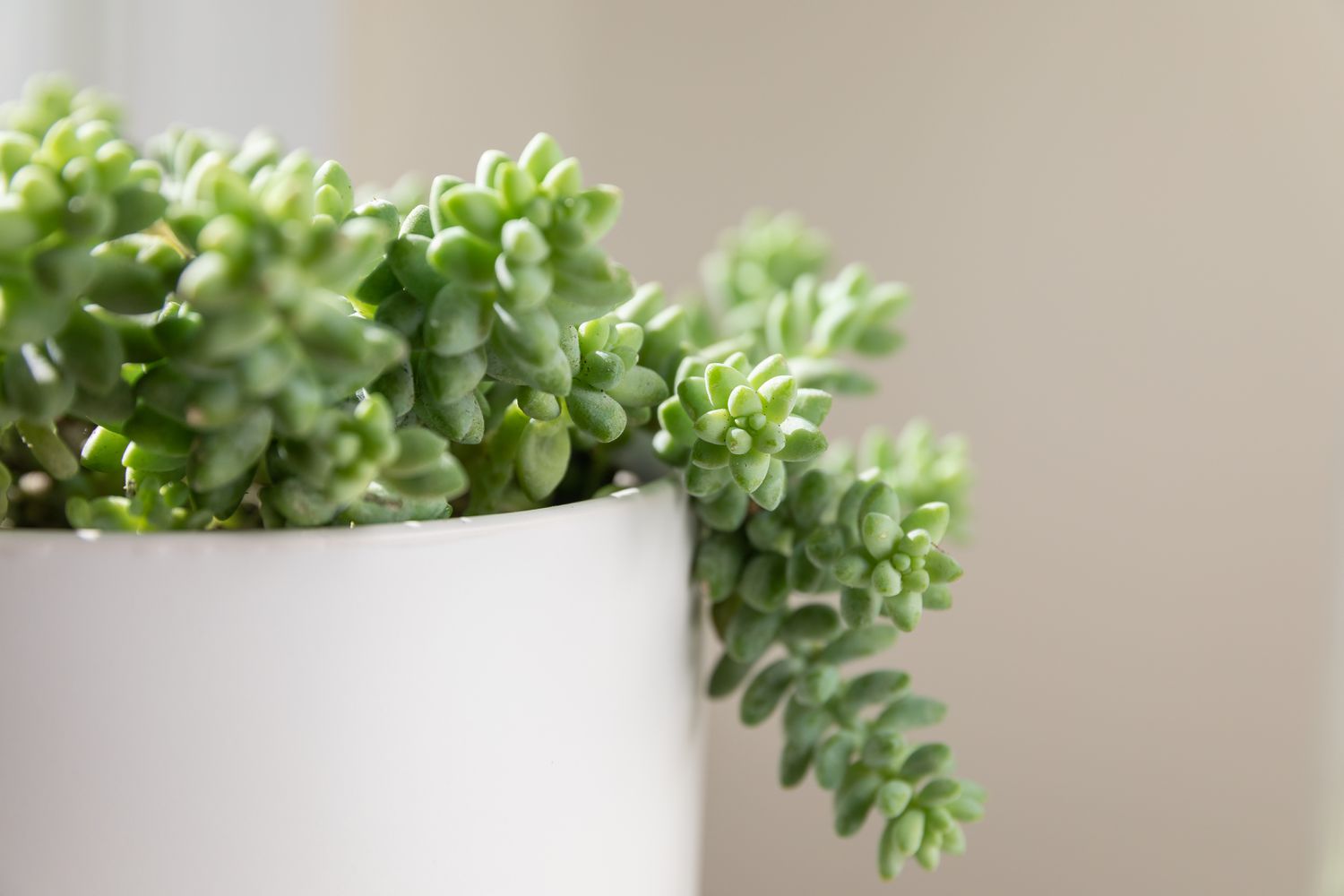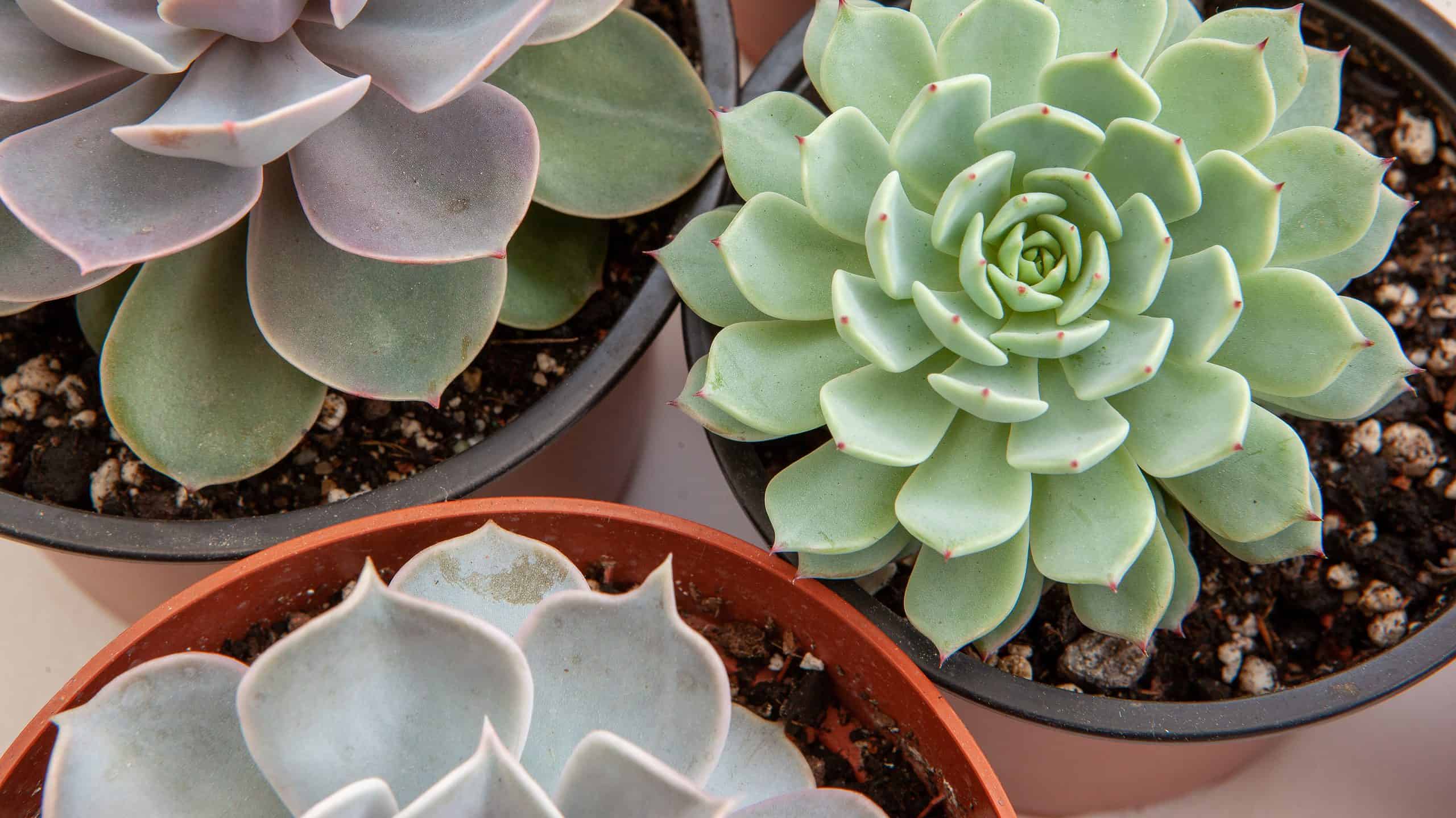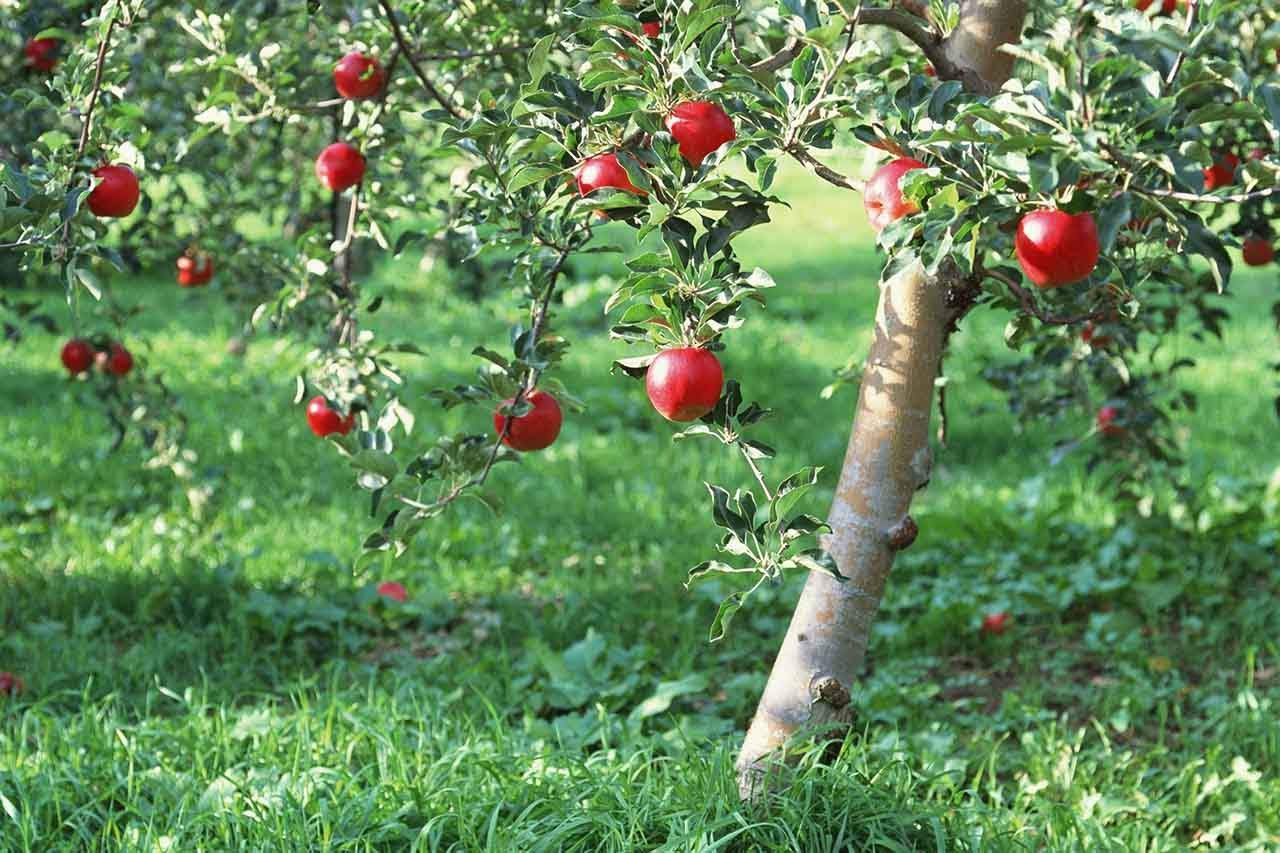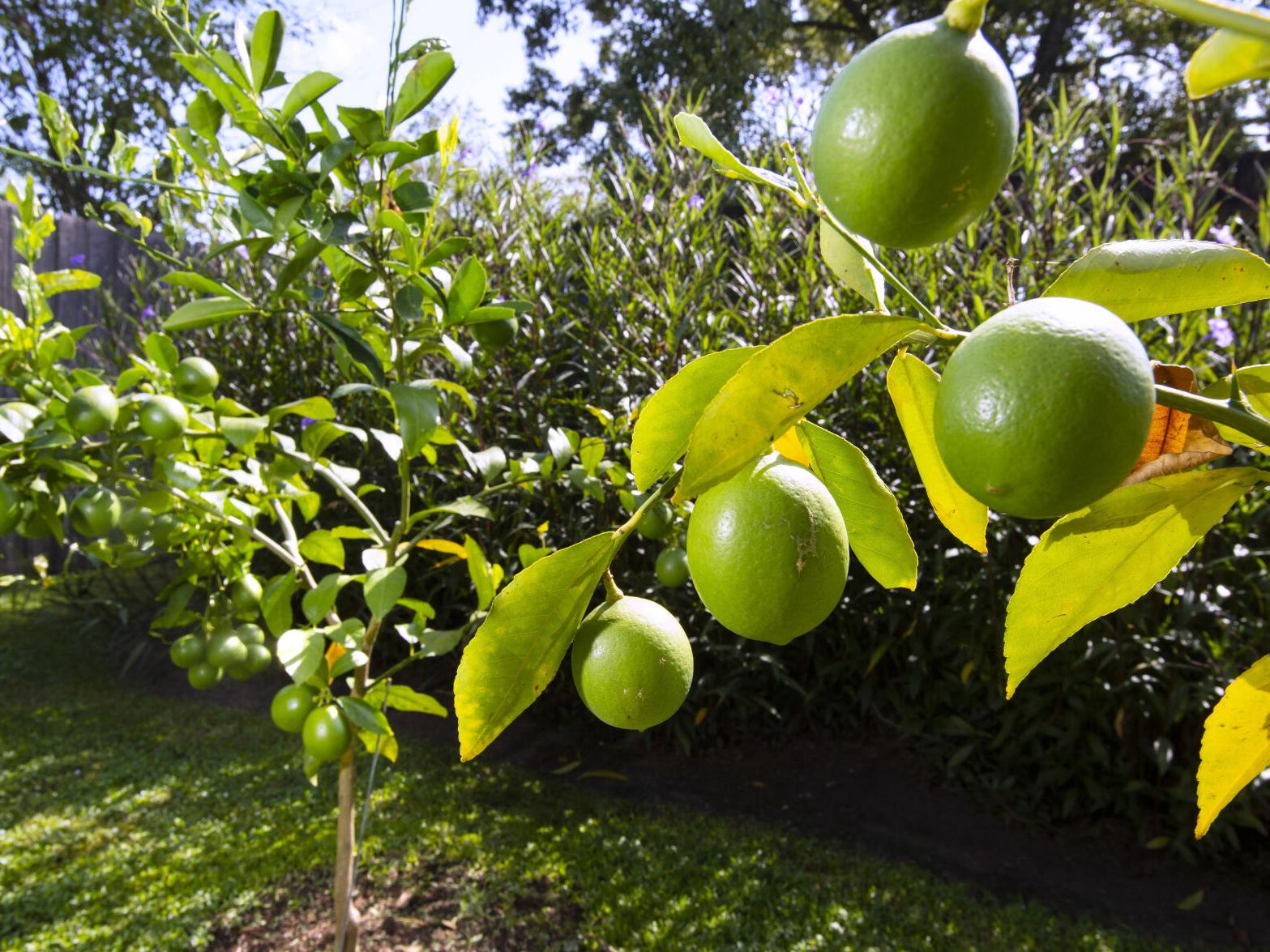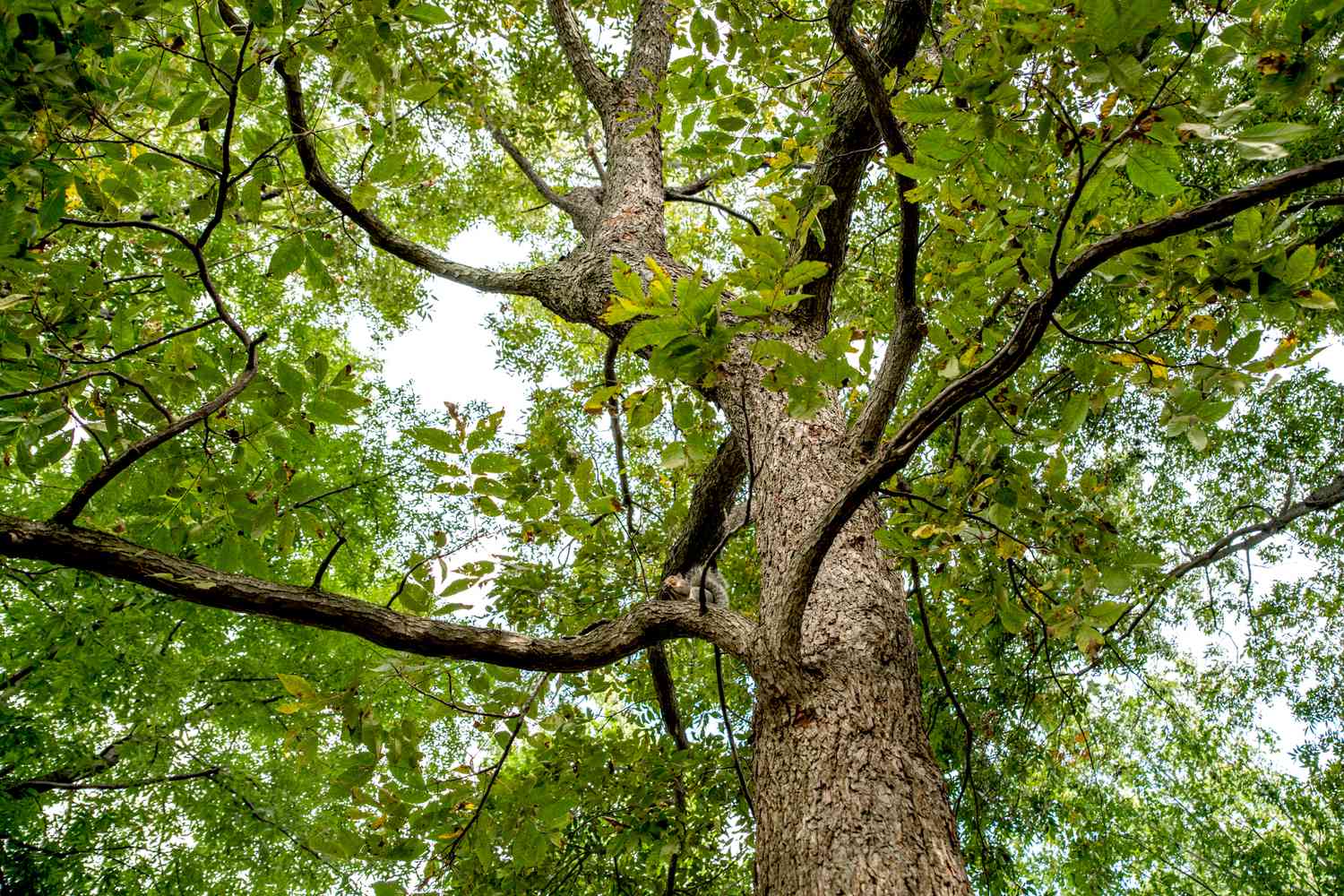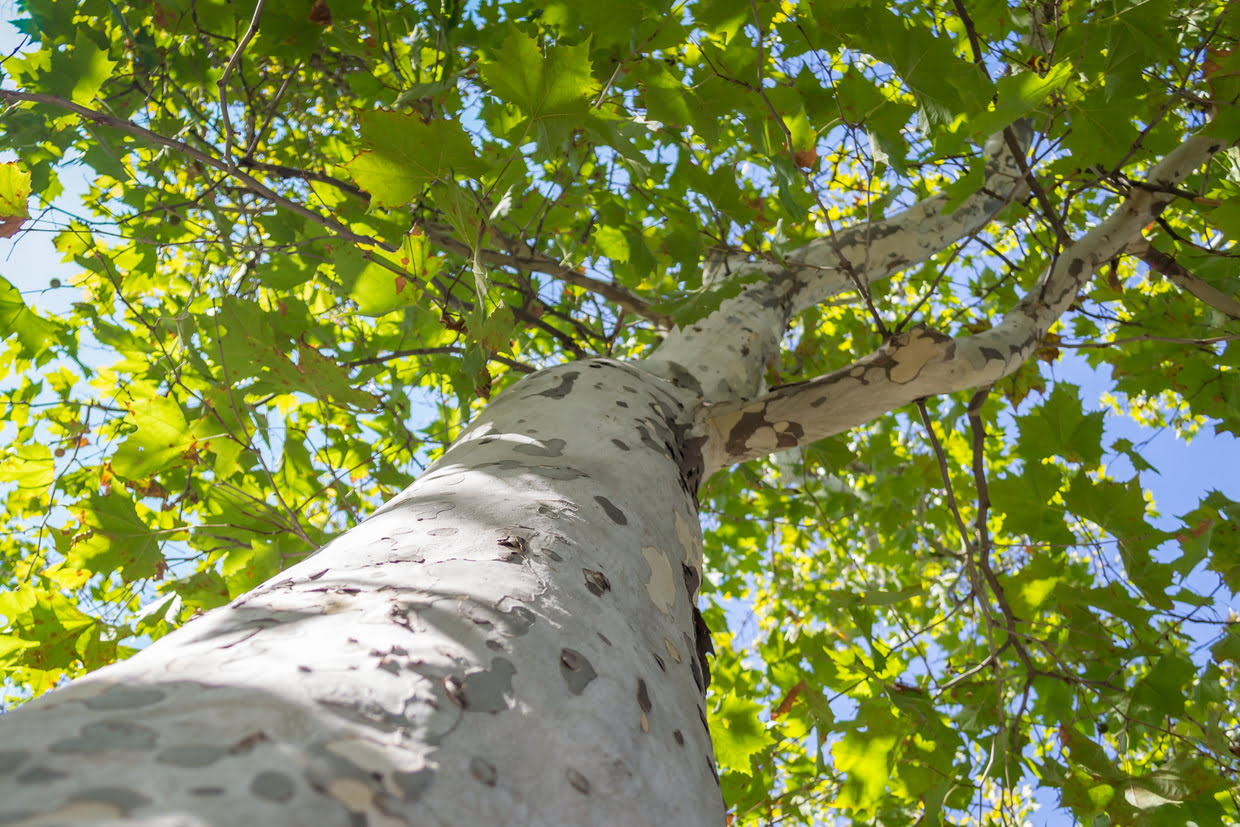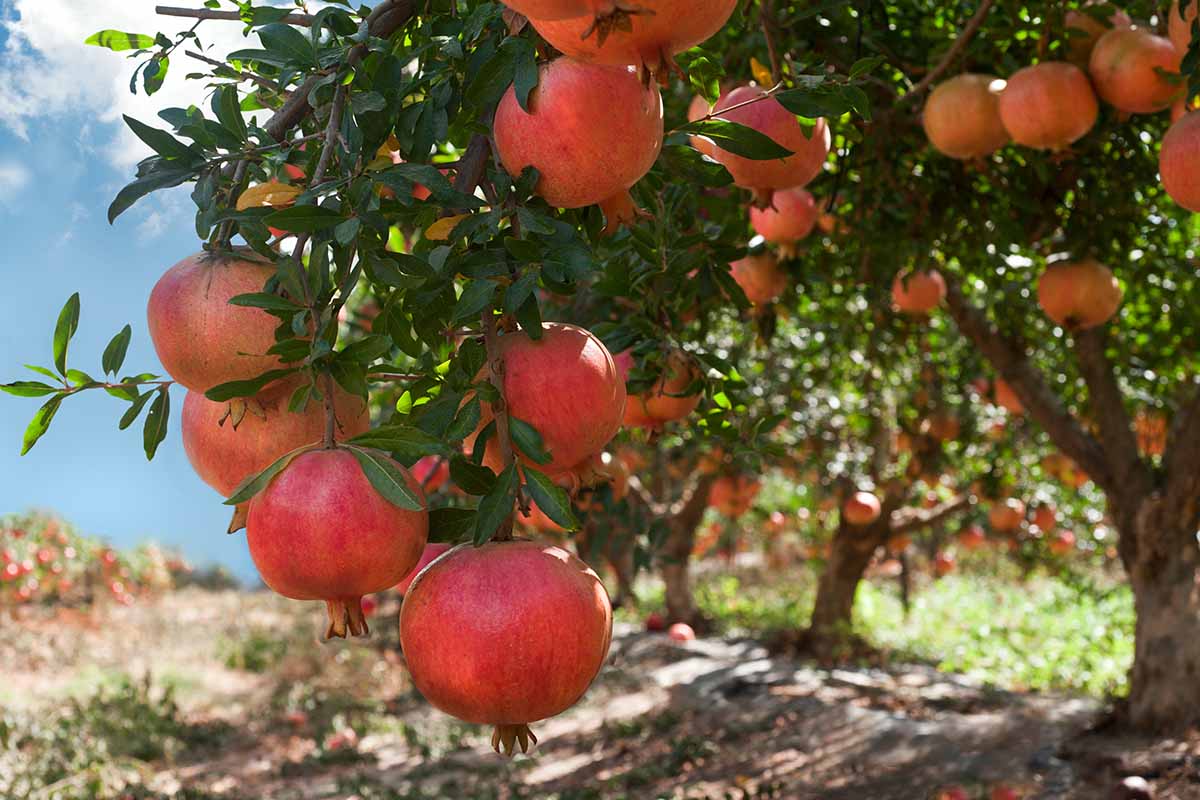Home>Gardening Techniques>Plant Care>How Fast Do Loquat Trees Grow
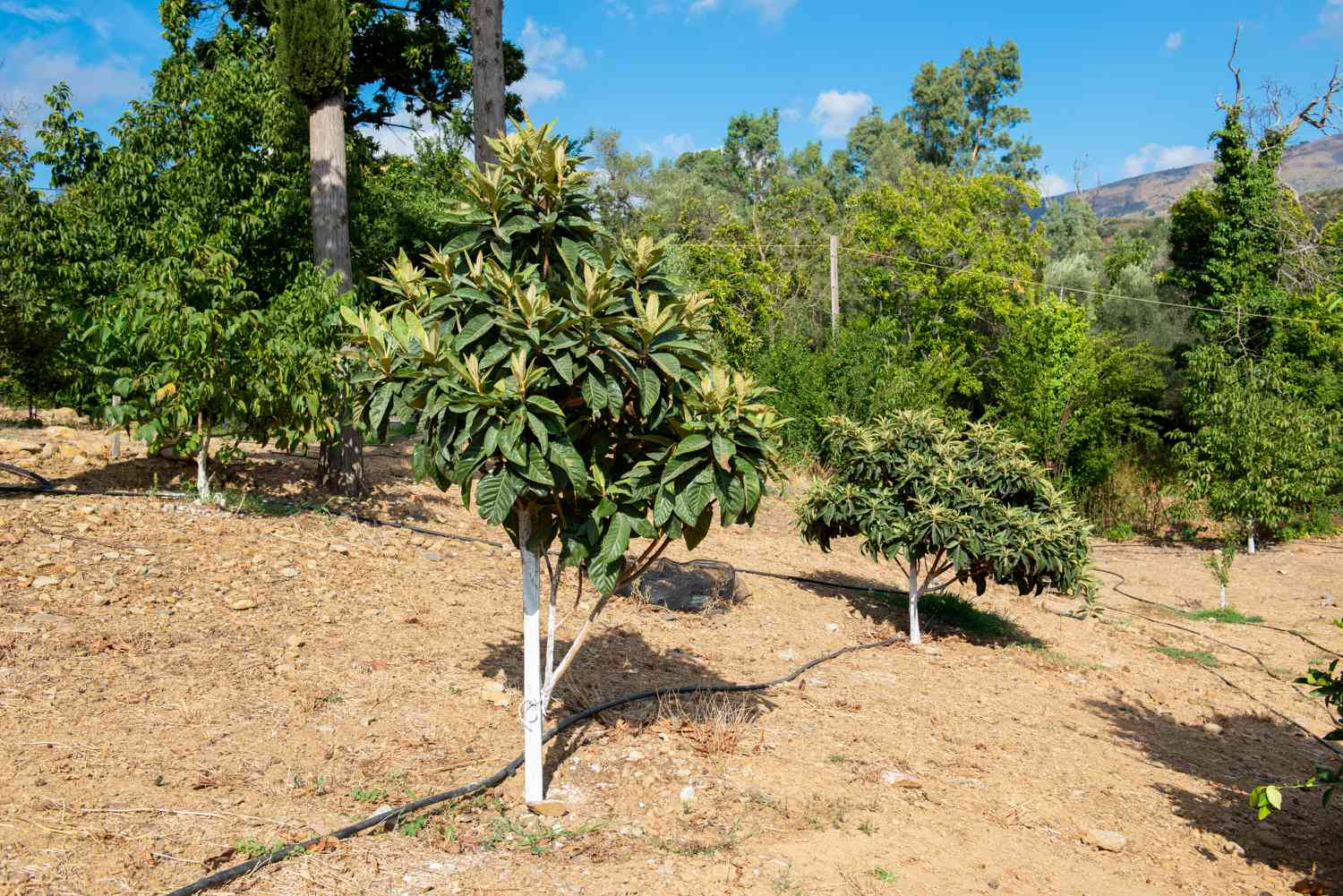

Plant Care
How Fast Do Loquat Trees Grow
Modified: January 22, 2024
Discover the growth rate of loquat trees and essential plant care tips. Learn how to nurture your loquat tree for optimal growth and fruit production.
(Many of the links in this article redirect to a specific reviewed product. Your purchase of these products through affiliate links helps to generate commission for Chicagolandgardening.com, at no extra cost. Learn more)
Table of Contents
- Introduction
- Factors Affecting the Growth of Loquat Trees
- Ideal Conditions for Loquat Tree Growth
- Root Development and Early Growth
- Vegetative Growth and Canopy Development
- Flowering and Fruit Production
- Factors That May Slow Down Loquat Tree Growth
- Pruning and Training for Optimal Growth
- Harvesting and Maintenance Considerations
- Conclusion
Introduction
Welcome to the world of loquat trees! Whether you’re a seasoned gardener or just starting out, understanding the growth patterns and care requirements of loquat trees is essential to ensure their health and productivity. Loquat trees, scientifically known as Eriobotrya japonica, are evergreen fruit trees native to Southeast Asia. They are prized for their deliciously sweet and tangy fruit, as well as their ornamental appeal.
In this article, we will explore the factors that affect the growth of loquat trees and learn about the ideal conditions for their optimal development. We will also delve into the different stages of loquat tree growth, from root development to canopy formation, flowering, and fruit production. Additionally, we will discuss the pruning and training techniques that can help promote healthy growth and maximize fruit yield.
Understanding the growth process of loquat trees is crucial for providing the right care and ensuring their success in your garden or orchard. So, let’s dive in and discover the secrets to cultivating thriving loquat trees!
Factors Affecting the Growth of Loquat Trees
Several factors play a crucial role in determining the growth and development of loquat trees. Understanding these factors will help you create the optimal conditions for their growth and ensure their overall health and productivity.
1. Climate: Loquat trees thrive in subtropical and temperate climates. They prefer mild winters and warm summers, with an average temperature range of 50°F to 85°F (10°C to 30°C). Extreme cold temperatures can damage the tree, while prolonged heatwaves can cause stress and reduce fruit set. It’s important to choose a location that provides adequate sunlight and protection from strong winds.
2. Soil Conditions: Loquat trees prefer well-draining soil that is rich in organic matter. They thrive in slightly acidic to neutral soil, with a pH range of 5.5 to 7.5. Soil with good water-holding capacity is essential, as consistent moisture is necessary for healthy growth. Conduct a soil test to determine the pH and nutrient levels, and amend the soil accordingly to ensure optimal conditions for your loquat trees.
3. Watering: Adequate watering is crucial for the growth of loquat trees, especially during the early stages of planting. Young trees require frequent watering to establish their roots, while established trees need deep, infrequent watering to promote deep root growth. Be mindful not to overwater, as this can lead to root rot. Mulching around the base of the tree helps retain moisture and regulates soil temperature.
4. Fertilization: Loquat trees benefit from regular fertilization to provide essential nutrients for growth and fruit production. Use a balanced fertilizer with a ratio of N-P-K (nitrogen, phosphorus, and potassium) appropriate for fruit trees. Apply fertilizer in early spring and early fall, following the recommended dosage instructions. Avoid excessive fertilization, as it can lead to excessive vegetative growth at the expense of fruit production.
5. Sunlight: Loquat trees thrive in full sun to partial shade. They require a minimum of 6 hours of direct sunlight per day for optimal growth and fruit production. Lack of sunlight can result in weak growth and poor fruit development. If planting in an area with shade, ensure that the tree receives sufficient sunlight during the day, especially during the fruiting season.
6. Pollination: Loquat trees are self-fertile, which means they can produce fruit with their own pollen. However, cross-pollination from nearby trees can significantly increase fruit yield. Encourage pollinators, such as bees and butterflies, by planting flowering plants nearby or using bee attractants. Alternately, manual pollination can be done by transferring pollen from one flower to another using a small brush or cotton swab.
By considering these factors and providing the appropriate conditions, you can promote healthy growth and ensure the successful development of your loquat trees.
Ideal Conditions for Loquat Tree Growth
To ensure the optimal growth and productivity of loquat trees, it’s important to provide them with the ideal conditions that closely resemble their natural habitat. Here are some key factors to consider:
1. Temperature: Loquat trees thrive in subtropical and temperate regions with mild winters and warm summers. They prefer a temperature range between 50°F and 85°F (10°C to 30°C). Extreme cold temperatures below 28°F (-2°C) can cause damage to the tree, while prolonged heatwaves above 100°F (38°C) can stress the tree and impact fruit production.
2. Sunlight: Loquat trees are sun-loving plants and require a minimum of 6 hours of direct sunlight per day for optimal growth and fruit production. Choose a planting location that provides ample sunlight, avoiding areas with excessive shade or buildings that might cast shadows on the tree.
3. Soil: Loquat trees prefer well-draining soil that is rich in organic matter. The soil should have a slightly acidic to neutral pH level ranging from 5.5 to 7.5. Prior to planting, conduct a soil test to assess the pH and nutrient levels. If necessary, amend the soil with organic matter like compost or well-rotted manure to improve its fertility and ensure proper drainage.
4. Watering: Loquat trees require regular and consistent moisture, especially during the initial stages of growth. Provide deep irrigation to establish a strong root system. Water deeply and infrequently, allowing the soil to dry out slightly between waterings. Avoid overwatering, as it can lead to root rot and other water-related issues. Applying mulch around the base of the tree helps retain moisture and regulate soil temperature.
5. Fertilization: Loquat trees benefit from regular fertilization to ensure adequate nutrient supply for growth and fruit production. Apply a balanced fruit tree fertilizer in early spring and early fall, following the recommended dosage instructions. This will provide the necessary nutrients, including nitrogen, phosphorus, and potassium, to support overall tree health and maximize fruit yield.
6. Air Circulation: Good air circulation is vital for the health of loquat trees. Avoid planting them in areas prone to excessive wind or locations where air is stagnant. Adequate air movement helps prevent the buildup of moisture and reduces the risk of fungal diseases.
7. Pruning and Training: Proper pruning and training techniques are important for shaping the tree, improving air circulation, and promoting fruit production. Prune the tree in early spring to remove dead or damaged branches and maintain an open canopy structure. This encourages light penetration and improves fruit quality.
Providing these ideal conditions will enable your loquat tree to flourish and reward you with abundant, flavorful fruit. With proper care and attention, you can enjoy a bountiful harvest and a thriving loquat tree in your garden or orchard.
Root Development and Early Growth
The early stages of a loquat tree’s life are crucial for establishing a strong root system and promoting healthy growth. Understanding the process of root development and providing the necessary care during this period will set the foundation for a successful and productive tree.
1. Planting: Choose a healthy loquat tree sapling from a reputable nursery. Select a site with well-draining soil and adequate sunlight. Dig a hole that is wide and deep enough to accommodate the roots comfortably. Place the sapling in the hole, making sure the root collar is level with or slightly above the soil surface. Fill the hole with soil, gently firming it around the roots. Water thoroughly to settle the soil and remove any air pockets.
2. Watering: During the early stages, water your loquat tree regularly to encourage root establishment. Keep the soil evenly moist but avoid waterlogging. Water deeply and infrequently, allowing the topsoil to dry out slightly between waterings. As the tree matures, adjust the watering frequency to once every 7-10 days, depending on weather conditions.
3. Mulching: Apply a layer of organic mulch around the base of the tree to help retain soil moisture, regulate temperature, and prevent weed growth. Leave a gap around the trunk to prevent moisture buildup and potential trunk rot. Replenish the mulch periodically to maintain a depth of 2-4 inches.
4. Fertilization: Avoid fertilizing newly planted loquat trees for the first year. Allow the tree to establish its roots before introducing additional nutrients. In the second year, apply a balanced fruit tree fertilizer following the recommended dosage instructions. Fertilize in early spring before new growth begins.
5. Pruning: While minimal pruning is required in the first few years, it is important to remove any dead or damaged branches. This encourages the tree to redirect its energy towards healthy growth. Prune in early spring before new growth appears, using clean and sharp pruning tools.
6. Monitoring: Keep a close eye on the early growth of your loquat tree, watching for any signs of nutrient deficiencies or pest infestations. Yellowing leaves, stunted growth, or curling leaves may indicate a problem that needs attention. Address any issues promptly to prevent further damage to the tree.
By providing the right care and attention during the early stages, you can ensure the successful development of a strong root system and set your loquat tree on the path to healthy and robust growth.
Vegetative Growth and Canopy Development
As a loquat tree matures, it undergoes significant vegetative growth and canopy development. This stage is vital for establishing a strong and robust tree structure, which in turn supports healthy fruit production. Understanding the growth patterns and providing the necessary care during this phase will contribute to the overall success of your loquat tree.
1. Pruning: Pruning plays a crucial role in shaping the tree and promoting optimal canopy development. In early spring, remove any dead, damaged, or crossed branches. This allows for better air circulation and light penetration throughout the canopy, reducing the risk of fungal diseases. Additionally, selectively thin out overcrowded branches to encourage strong and evenly spaced scaffold branches.
2. Training: Proper training of the young loquat tree is essential for shaping its growth. Use stakes or trellis systems to train the main stem and lateral branches in the desired direction. This helps create a well-balanced and open canopy, allowing for better sunlight exposure and airflow.
3. Watering: Provide consistent and deep watering throughout the growing season to support vegetative growth. Loquat trees benefit from a thorough soak every 7-10 days, depending on weather conditions. Water at the base of the tree, ensuring that the moisture reaches the root zone. Avoid overhead watering, as it can lead to the development of fungal diseases.
4. Fertilization: Maintain a regular fertilization schedule to supply the tree with essential nutrients. Apply a balanced fruit tree fertilizer in early spring and early fall, following the recommended dosage instructions. This helps provide the necessary elements for vigorous vegetative growth and overall tree health.
5. Disease and Pest Control: Monitor your loquat tree for signs of diseases or pest infestations, which can hinder vegetative growth. Common diseases include fungal infections like powdery mildew and anthracnose. Some pests that may affect loquat trees include aphids and scale insects. Utilize organic pest control methods or consult with a professional if necessary to address any issues.
6. Supportive Structures: As your loquat tree grows taller, consider providing support in the form of stakes or trellises. These structures help stabilize the tree during strong winds and prevent breakage. It is especially important to provide support if the tree is heavily laden with fruit.
By focusing on proper pruning, training, watering, fertilization, and disease control, you can ensure healthy vegetative growth and canopy development. This sets the stage for a strong and productive loquat tree.
Flowering and Fruit Production
One of the most anticipated stages in the growth of a loquat tree is flowering and fruit production. Proper care during this phase will ensure a plentiful harvest of sweet and juicy fruit. Understanding the factors that influence flowering and fruiting and implementing the right practices will maximize the yield of your loquat tree.
1. Flowering: Loquat trees typically produce clusters of small, fragrant white flowers in late winter or early spring. Flowering is influenced by several factors, including age, chilling hours, and weather conditions. It is normal for younger trees to have fewer flowers initially. Adequate chilling hours during the winter (around 200-400 hours below 45°F/7°C) promote flower bud development. Ensure that your tree receives sufficient sunlight and is protected from late frosts, which can damage the delicate flowers.
2. Pollination: Loquat trees are self-fertile, meaning they can produce fruit from their own pollen. However, cross-pollination from nearby trees can significantly increase fruit set and improve overall yield. Encourage the presence of pollinators, such as bees, by planting flowers or providing nesting sites nearby. You can also manually transfer pollen from one flower to another using a small brush or cotton swab to ensure pollination.
3. Thinning: Thinning the fruit clusters is crucial for promoting good fruit size and quality. When the young fruit reaches about 1 inch (2.5 cm) in diameter, selectively remove excess fruit, leaving about 4-6 inches (10-15 cm) of space between each remaining fruit. Thinning helps to reduce competition for resources and allows the remaining fruit to reach its full potential.
4. Watering and Fertilization: Consistent moisture is essential during the fruiting stage to support healthy development and prevent fruit drop. Water your loquat tree deeply and infrequently, ensuring that the water reaches the roots. Avoid excessive watering, as it can lead to root rot. Additionally, continue regular fertilization with a balanced fruit tree fertilizer to provide the necessary nutrients for fruit production.
5. Pests and Diseases: Be vigilant for pests and diseases that may affect the fruit production of your loquat tree. Common pests include fruit flies, scale insects, and aphids. Regularly inspect the tree and take appropriate measures to control these pests. Fungal diseases, such as brown rot and anthracnose, can also affect the fruit. Preventive measures, including proper sanitation and regular monitoring, can help manage these diseases.
6. Harvesting: Harvest your loquat fruit when they are fully ripe but still firm. The fruit should have a bright orange color and come off the stem easily. Avoid leaving overripe fruit on the tree, as it can attract pests. Handle the fruit gently to prevent bruising and store them in a cool and dry place, if not consumed immediately.
By understanding the flowering and fruiting process of loquat trees and implementing proper care, you can enjoy a bountiful harvest of delicious loquats that will delight your taste buds.
Factors That May Slow Down Loquat Tree Growth
While loquat trees are generally vigorous and resilient, several factors can slow down their growth and development. Being aware of these factors will help you identify and address any issues that may be affecting the health and growth of your loquat tree.
1. Insufficient Sunlight: Loquat trees require a minimum of 6 hours of direct sunlight per day for optimal growth. Lack of sunlight can result in weak growth, sparse foliage, and reduced fruit production. If your loquat tree is not receiving enough sunlight due to shading from buildings or other trees, consider pruning or relocating it to a sunnier spot.
2. Improper Soil Conditions: Loquat trees thrive in well-draining soil that is rich in organic matter. Soils that are heavy, compacted, or poorly drained can hinder root development and limit nutrient uptake. Ensure that the soil around your loquat tree is well-draining and amend the soil if necessary by adding organic matter like compost or well-rotted manure.
3. Water Stress: Both overwatering and underwatering can negatively impact loquat tree growth. Overwatering can lead to root rot and other water-related issues, while underwatering can cause stress and stunted growth. It’s important to provide consistent and appropriate moisture levels by watering deeply and infrequently, allowing the topsoil to dry out slightly between waterings.
4. Nutrient Deficiencies: Insufficient nutrient availability can slow down loquat tree growth and impact fruit production. Common nutrient deficiencies in loquat trees include nitrogen, phosphorus, potassium, and zinc. Conduct a soil test to assess nutrient levels and amend the soil with appropriate fertilizers to provide the necessary nutrients for healthy growth.
5. Pest and Disease Infestations: Pests and diseases can weaken loquat trees and impede their growth. Common pests that may affect loquat trees include aphids, mites, fruit flies, and scale insects. Fungal diseases such as powdery mildew and anthracnose can also cause damage to the tree. Regularly inspect your loquat tree for any signs of pests or diseases and take appropriate measures for control.
6. Improper Pruning: While pruning is important for shaping loquat trees, excessive or improper pruning can slow down growth. Overpruning can lead to a reduction in the tree’s ability to produce energy through photosynthesis, ultimately impacting overall growth. Follow proper pruning techniques and avoid excessive removal of branches.
Identifying and addressing these factors promptly will help promote healthy growth and development of your loquat tree, ensuring its long-term success in your garden or orchard.
Pruning and Training for Optimal Growth
Pruning and training are essential practices for promoting optimal growth and shaping the structure of loquat trees. When done correctly, these techniques contribute to improved sunlight penetration, airflow, and overall tree health. Let’s explore the key considerations and techniques for pruning and training your loquat tree.
1. Pruning Goals: The primary goals of pruning a loquat tree are to remove dead, damaged, or diseased branches and to shape the tree for better growth and fruit production. Proper pruning also helps maintain an open canopy structure, allowing for improved light penetration and airflow.
2. Timing: The best time to prune a loquat tree is in early spring before new growth begins. During this time, the tree is dormant, making it easier to identify and remove unwanted branches. Avoid pruning in late summer or fall, as this can stimulate new growth that may be susceptible to winter damage.
3. Branch Selection: When selecting branches to keep, aim for those with wide angles of attachment and proper spacing. These branches are less prone to splitting or breaking under the weight of fruit or during strong winds. Remove any crossing or rubbing branches to prevent damage and promote proper growth.
4. Thinning: Thinning the branches of your loquat tree helps create a well-balanced canopy and reduces competition for resources. Ideally, maintain a spacing of 6-12 inches (15-30 cm) between lateral branches to ensure adequate airflow and light penetration. Thin out overcrowded branches to improve tree structure and fruit quality.
5. Heading Back: Heading back involves cutting back the leader or main branches to encourage lateral branching and a denser canopy. This technique helps create a more compact tree form, making it easier for fruiting branches to receive sufficient sunlight. Make heading cuts just above a healthy lateral bud or side branch.
6. Canopy Height: Consider the desired height of your loquat tree when pruning. Keep in mind that shorter trees are easier to manage and harvest. Prune the central leader to maintain the desired height and encourage lateral branching to keep the tree at a manageable size for maintenance and harvesting.
7. Tools and Technique: Use clean and sharp pruning tools to make smooth and precise cuts. This minimizes the risk of damage and promotes faster healing. Proper technique involves making cuts at a slight angle just outside the branch collar, which is the swollen area where the branch meets the trunk or parent branch.
Remember, every tree is unique, and pruning techniques may vary depending on the specific growth pattern and desired shape. Take your time, observe the tree’s natural form, and make thoughtful cuts to ensure the best possible growth and structure for your loquat tree.
Harvesting and Maintenance Considerations
Harvesting and maintenance play vital roles in the success of your loquat tree. Proper care ensures the tree remains healthy and productive, while effective harvesting techniques help you enjoy the delicious fruits at their peak. Let’s explore some key considerations for harvesting and maintaining your loquat tree.
1. Harvesting Timing: Loquat fruits are best harvested when fully ripe but still firm. The fruit should have a bright orange color and come off the stem easily with a gentle twist. Avoid leaving overripe fruit on the tree, as it can attract pests and impact the overall health of the tree.
2. Harvesting Technique: Handle the harvested fruit with care to prevent bruising or damage. Use a pair of pruning shears or scissors to cut the fruit stems close to the base of the fruit. Place the harvested fruit in a basket or container, taking care not to overfill or stack them to prevent unnecessary pressure on the fruit.
3. Regular Pruning: Regular pruning is essential for maintaining the health and shape of your loquat tree. Prune in early spring before new growth begins, removing any dead, damaged, or diseased branches. Maintain an open canopy structure for better sunlight penetration and airflow. Periodically thin out overcrowded branches and remove water sprouts or suckers that may emerge from the base of the tree.
4. Irrigation: Consistent and appropriate irrigation is crucial for the health and vigor of your loquat tree. Water deeply and infrequently, allowing the topsoil to dry out slightly between waterings. Monitor the moisture level of the soil and adjust watering frequency based on the weather conditions and the specific needs of your tree.
5. Weed Control: Regularly remove weeds growing around the base of the loquat tree, as they compete for nutrients and moisture. Apply a layer of organic mulch around the tree to suppress weed growth and retain soil moisture. Be cautious not to pile mulch directly against the trunk, as it can create a favorable environment for pests and diseases.
6. Pest and Disease Management: Monitor your loquat tree for any signs of pest infestations or diseases. Common pests that may affect loquat trees include aphids, scale insects, and fruit flies. Regularly inspect the tree for any signs of damage and take appropriate measures for pest control. Additionally, prune out and remove any infected or diseased branches to prevent the spread of diseases.
7. Regular Fertilization: Maintain a regular fertilization schedule to provide essential nutrients for your loquat tree. Apply a balanced fruit tree fertilizer in early spring and early fall, following the recommended dosage instructions. This ensures that the tree has the necessary nutrients for healthy growth, fruit production, and overall vigor.
By implementing proper harvesting techniques and consistently maintaining your loquat tree, you can enjoy a bountiful harvest of delicious fruit year after year. Regular care and attention will keep your loquat tree healthy and promote its longevity in your garden or orchard.
Conclusion
Cultivating loquat trees can be a rewarding and fruitful endeavor when you understand their growth patterns and provide them with the care they need. By considering factors such as climate, soil conditions, sunlight, watering, and pollination, you can create an ideal environment for your loquat tree to thrive.
From the early stages of root development and vegetative growth to the excitement of flowering and fruit production, each phase requires attention and specific practices. Applying proper pruning and training techniques ensures optimal growth and canopy development. Harvesting the fruits at the right time and maintaining the tree through regular pruning, irrigation, and pest management are vital for continued success.
Remember to monitor your loquat tree closely, ensuring that it receives adequate sunlight, proper nutrients, and timely care. By addressing issues promptly and providing the necessary conditions, you can enjoy a healthy and productive loquat tree in your garden or orchard.
So, roll up your sleeves, put on your gardening gloves, and embark on the journey of growing your own loquat tree. With patience, dedication, and the knowledge you’ve gained, you’ll be rewarded with an abundance of sweet and delicious fruits from your thriving loquat tree for years to come.

